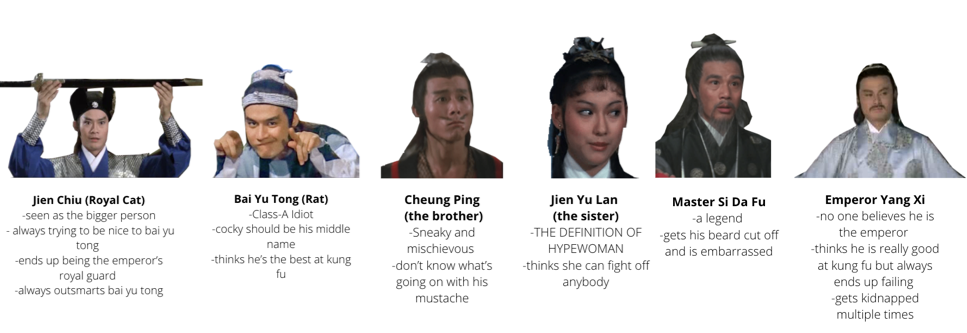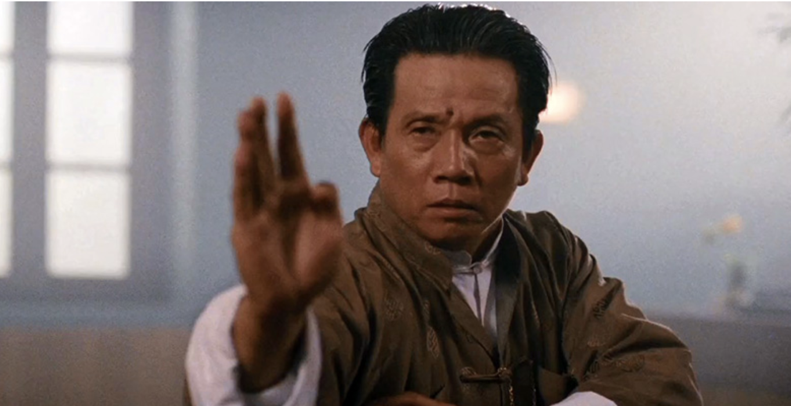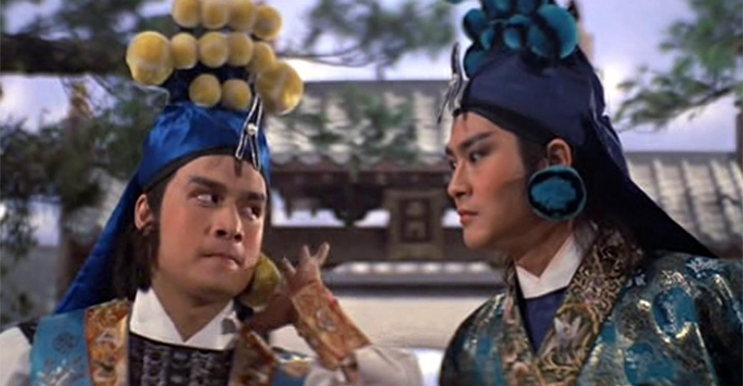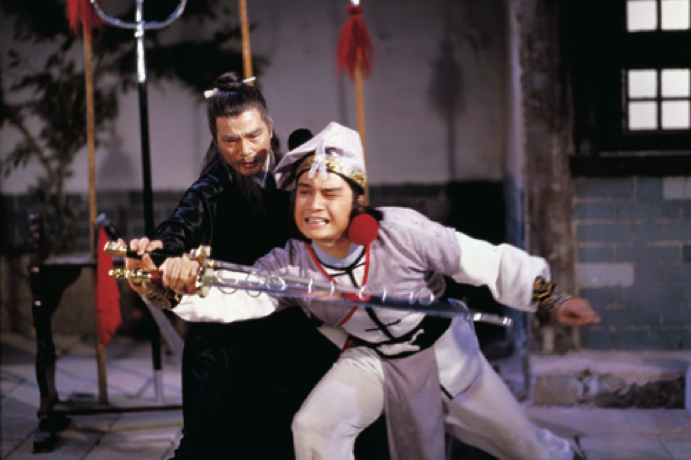Cat vs. Rat (御貓三戲錦毛鼠) (1982)
In the ‘70s Hong Kong witnesses the peak of its Martial Art film craze with sensations such as Bruce Lee. However, after Lee’s short-lived career, the Martial Art film genre lost its attraction and resulted in a period of stagnation. Films produced in the ’80s as the Martial Art films saw a decline in appreciation. Compared to the past two decades, the production value and attention to detail are lacking in films from this decade. However, that does not indicate films from the ‘80s were faulty. Films like Cat vs. Rat (御貓三戲錦毛鼠) (1982) merge tradition and experimentation within the genre. With Cat vs. Rat (御貓三戲錦毛鼠) (1982), viewers experience a comedic approach to Chinese operas. With ridiculous stunts and lighthearted banter, Shaw Brother’s Studio uses comedy to promote the forgotten genre.

Image Source: Celestial Pictures Limited
Plot Summary
Bai Yu Tong (Rat) and Jien Chiu (Royal Cat) are rivals who continuously try to out beat each other in everything, particularly their Martial Art skills. Although their Martial art teacher, Master Si Da Fu, stresses both students are equally talented, Bai goes to great lengths to outsmart and beat Jien Chiu. However, Bai makes the mistake of belittling the emperor. To Bai’s surprise, his nemesis, Jien, claims the title of the royal guard for the emperor. Fueled with jealousy and rage, Bai attempts to jeopardize Jien’s position by stealing the imperial jade seal and embarrassing Jien. However, does Bai succeed?
A Breakdown of the Characters

Who is Liu Chia-Ling?
Liu Chia-Ling was a renaissance man as he experimented with acting, producing, directing, and choreographing for Hong Kong’s film industry. Before his rise to fame, his roles were limited and he mostly focused on choreography for black and white films. Until 1950, Liu appeared in his first film, How Wong Fei-Hung Defeated Three Bullies with a Rod (黃飛鴻一棍伏三霸) (1953). By the ‘60s, Liu became one of Shaw Studio’s leading choreographers and developed a strong relationship with the legendary Chang Cheh. Between the ‘70s to ‘80s, Liu made his directorial debut at Shaw Brother’s Studio. Liu still worked within the film industry late into his career. In 2005 he was awarded ‘Best Action Choreography’ for the film Seven Swords (七劍) (2005). Sadly, Hong Kong lost a star in 2013, but Liu’s impact in the Hong Kong entertainment industry will be everlasting as he paved the way for stars ranging from Jackie Chan to Kara Hui.

Image Source: https://www.fareastfilms.com/?feature_post_type=liu-chia-liang-a-retrospective
A Return to Tradition
From the film’s period to the choice of music, Liu references traditional Chinese motifs throughout the film. The most notable takeaway from this film is the possible inspiration for this film’s narrative: The Chinese Zodiac. According to legends, the cat and rat used to be the best of friends and spent every waking moment together. When both animals realized the news about the great race, both made plans to cross the river together. On the day of the race, the cat decided to take a quick nap, but the rat chose to abandon the cat in hopes of winning the competition. After waking up from the nap, the cat discovers it missed the race, but worst of all, the rat won. The cat being furious from the rat’s betrayal, swore to hate the rat forever. This narrative attempts to explain why cats do not get along with rats and parallel the film’s character’s relationship. However, Liu’s deliberate choice to reference the ancient Chinese tale addresses the long-lasting efforts to celebrate Chinese cultural heritage.

Image Source: Celestial Pictures Limited
The Use of Comedy in Martial Art Films
The inclusion of comedy is not uncommon within the Martial Art genre. Dating back to the ‘60s, films such as Come Drink with Me (大醉俠) (1966) and Golden Buddha (金菩薩) (1966) use comedic punchlines to enhance the viewer’s experience. This film attempts to have a plot, the gimmicks and jokes are tedious. However, one cannot help but laugh at the childish banter between the two main characters. In fact, the saving grace of this film is Bai Yu Tong’s eccentric, over the top facial expressions and gestures. In moments of celebration or stress, one awaits for Bai’s reaction. His cheeky grin and the way he caresses his chin as he plots his next scheme against Jien is a source of entertainment. These gestures also challenge the perception of martial art. Within Hong Kong’s martial art genre, most films addressed pressing issues and themes. With this film, exaggerated facial expressions and reactions are taken out of proportion for comedic reasons. Similar to previous martial arts films that adopted comedy, Cat vs. Rat heavily relies on humor to offer an alternative for those interested in martial arts films.

Image Source: Celestial Pictures Limited
By Ariana Heffner
Film footage supplied by Celestial Pictures Limited / 電影片段由天映娛樂有限公司提供
